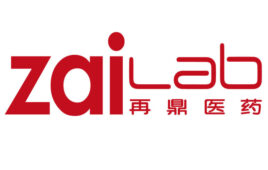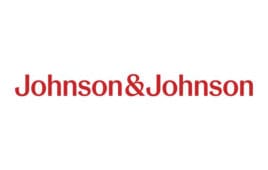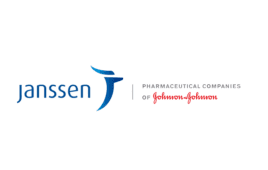 Janssen continues to strengthen the case that its interleukin-23 inhibitor TREMFYA (guselkumab) offers promise to many patients with psoriatic arthritis (PsA).
Janssen continues to strengthen the case that its interleukin-23 inhibitor TREMFYA (guselkumab) offers promise to many patients with psoriatic arthritis (PsA).
The company’s phase 3b COSMOS clinical trial involving 189 patients with active PsA and an inadequate response to one to two previous tumor necrosis factor (TNF) inhibitors, guselkumab showed sustained improvements in measures of minimal disease activity (MDA) over 48 weeks of treatment. TNF inhibitors are a class of medications that target and suppress the overproduction of the inflammatory protein TNF, making them a common treatment option for autoimmune diseases such as PsA.
The IL-23 inhibitor guselkumab provides a treatment alternative, recording sustained improvements in measures of minimal disease activity (MDA) over 48 weeks of treatment. In particular, 60 to 80% of patients achieved MDA across various measures.
Beyond guselkumab, another approved IL-23 inhibitor for the treatment of psoriatic arthritis (PsA) is AbbVie’s Skyrizi (risankizumab). The FDA gave the green light for Skyrizi’s use in psoriasis in 2019, and subsequently extended its approval for PsA as well in early 2022.
COSMOS trial of guselkumab fared well in difficult-to-treat patients
One of the principal investigators of COSMOS, Dr. Carlo Selmi, provided an overview of the study, noting that it focused on patients who had become resistant to multiple biologics, making them challenging to treat.
“Predominantly, psoriatic arthritis is treated with biologics, and TNF alpha inhibitors remain the first-line treatment for about 90% of patients,” said Selmi, who is the director of the residency school of emergency medicine at Humanitas University.
Such patients often become resistant to multiple biologics, “making them the toughest to treat,” Selmi said. The discovery of an alternative mechanism, IL-23 inhibition, is promising news for these patients, Selmi said.
IL-23 inhibition offers new treatment approach for challenging cases
Selmi explained that, in contrast to rheumatoid arthritis, psoriatic arthritis exhibits a more complex phenotype. Physicians treating rheumatoid arthritis primarily focus on factors like joint counts, which evaluate swollen or tender joints, and patient perception, assessing the patient’s view of their disease activity. They also consider inflammatory markers such as C-reactive protein, a protein generated by the liver as a result of inflammation, and ESR, the erythrocyte sedimentation rate, a blood test analyzing the settling rate of red blood cells in a test tube, signifying inflammation.
In PsA, researchers must weigh factors beyond peripheral arthritis such as dactylitis, enthesitis and the involvement of skin and nails. The MDA index used in COSMOS provided a comprehensive measure of disease activity, Selmi noted. The index is “significantly more relevant to the patient than, say, a joint count or other indices like the ACR response borrowed from rheumatoid arthritis,” he noted.

Predictors of achievement of patient-reported Minimal Disease Activity (MDA) domains at Week 48 in patients with Psoriatic Arthritis (PsA) inadequately responding to TNF inhibitors, treated with guselkumab in the COSMOS study. The table outlines different baseline variables (BL variables) and how they influenced different MDA parameters, including HAQ-DI (Health Assessment Questionnaire – Disability Index) ≤0.5, Patient pain ≤15, Methotrexate (MTX) Use, Patient Global Assessment (PtGA) ≤20, Tender Joint Count (TJC) ≤1 and the FACIT fatigue score, a scale is a questionnaire used to assess levels of fatigue in patients. The predictors are reported as odds ratios, hazard ratios, or simple measures with 95% confidence intervals.
Complexity of psoriatic arthritis and the MDA index in COSMOS trial
Taking into account the complexity of psoriatic arthritis, the COSMOS trial assessed guselkumab’s effectiveness on a range of response rates and patient experiences. The overall response rates at weeks 24 and 48 across varied domains were notable. These included the Psoriasis Area and Severity Index (PASI), Leeds Enthesitis Index (LEI), swollen joint count (SJC) and Health Assessment Questionnaire – Disability Index (HAQ-DI), among others. Interestingly, physician-reported domains (LEI, PASI and SJC) seemed to demonstrate faster improvements than patient-driven ones. “What’s interesting about the COSMOS trial findings is that more objective measures of disease, such as the swollen joint count, were met first, as compared to the patient’s perception,” Selmi said. “However, this doesn’t diminish the importance of patient-reported outcomes. It’s about striking the right balance between objective measures and the patient’s experience.”
Despite the trial findings indicating that physicians noted objective measures of disease before patients did, Selmi emphasized the need for a balanced approach that factors in patient-reported outcomes. Selmi noted, “The safety profile of guselkumab is reassuring, especially in terms of infections, a concern whenever we use an immunosuppressive type of treatment.” He also said the lack of signals for major infections, major cardiovascular events, and neoplastic growth were comforting.
Guselkumab’s safety profile and implications for patient outcomes
The COSMOS trial’s findings also highlighted predictors of non-achievement of MDA, such as baseline domain scores, fatigue, and methotrexate use. This information could be instrumental in making more informed treatment decisions for individual patients. As data from the Phase 3 studies continue to emerge, it appears that patients treated with TREMFYA can achieve long-term efficacy across PsA domains, including sustained improvements in health-related quality of life (HRQoL). The COSMOS trial also discovered predictors of non-achievement of MDA. These include baseline domain scores, fatigue, and methotrexate use.
“And we now know that interleukin 23 is crucial also to those conditions,” Selmi added. “And in fact, interleukin 23 blockers have now been even approved that are being evaluated in phase 3 trials for both Crohn’s and ulcerative colitis.”
In PsA treatment, traditionally only a minority of patients on biologic therapy have achieved sustained MDA. TREMFYA offered sustained improvement across all MDA domains over 48 weeks for adult patients who showed insufficient responses to one or two TNFis.
Filed Under: Biologics, clinical trials, Drug Discovery, Immunology, Rheumatology


